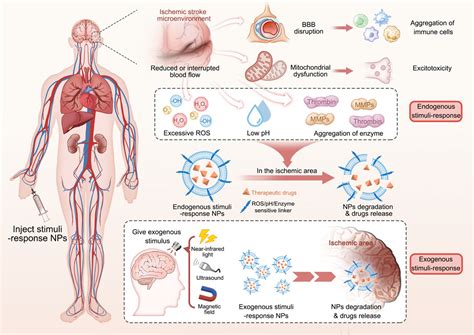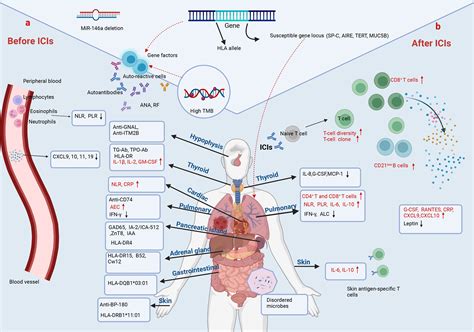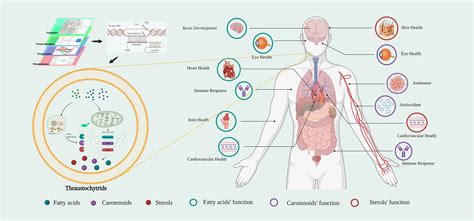As people age, they become more vulnerable to a range of chronic diseases that can significantly impact their quality of life. Understanding the most common diseases affecting elderly people is crucial for proper management and prevention. This comprehensive guide explores key chronic conditions, highlighting the risk factors, symptoms, and early detection methods. We will also cover various treatment options, medication management strategies, and the importance of lifestyle modifications to improve overall health. Additionally, caregivers play a vital role in supporting elderly patients, and we will discuss available resources and support systems to ensure comprehensive care for aging individuals.
Explore this topic with ujocis.net in great detail.
1. Overview of Common Diseases in Elderly People
As individuals age, the body undergoes various changes, making older adults more susceptible to several chronic diseases. Among the most common conditions affecting the elderly are cardiovascular diseases, including hypertension, heart disease, and stroke. These diseases are prevalent due to the natural aging of blood vessels and the heart.
Another widespread issue is diabetes, which often develops as the body’s ability to manage blood sugar declines with age. Joint problems, particularly osteoarthritis, also become more frequent, leading to pain and reduced mobility. Cognitive disorders such as Alzheimer’s disease and dementia are increasingly common as well, impacting memory, thinking, and behavior.
Respiratory conditions like chronic obstructive pulmonary disease (COPD) are also a concern in older adults, especially for those with a history of smoking. Additionally, weakened bones and the risk of fractures are prevalent due to osteoporosis, which becomes more severe with age.
Cancer rates also rise with age, as genetic mutations accumulate over time. Eye conditions like cataracts and macular degeneration are common, affecting vision and quality of life. Each of these diseases presents unique challenges, but with early detection and proper management, many can be controlled or mitigated, improving the quality of life for elderly individuals. Understanding these diseases is the first step in providing effective care and prevention.

2. Risk Factors and Prevention Strategies
Several risk factors contribute to the development of chronic diseases in elderly people. Age itself is a significant factor, as the body’s systems naturally weaken over time. Genetic predisposition also plays a role, with individuals having a family history of conditions like heart disease, diabetes, or Alzheimer’s being more prone to developing them. Lifestyle habits such as poor diet, lack of exercise, and smoking can accelerate the onset of these conditions. Obesity and high blood pressure increase the risk of cardiovascular diseases, while long-term exposure to pollutants or smoking heightens the risk of respiratory diseases like COPD.
To reduce these risks, preventive strategies are essential. Maintaining a healthy diet rich in fruits, vegetables, whole grains, and lean proteins helps regulate weight and reduce blood pressure. Regular physical activity, such as walking or swimming, strengthens the heart, improves circulation, and supports joint health. Smoking cessation is crucial for preventing respiratory diseases and improving overall health. Regular health screenings allow for early detection of issues like high blood pressure, diabetes, or signs of cognitive decline. Vaccinations, such as flu and pneumonia shots, can also protect against infections that are particularly dangerous for the elderly. Together, these strategies can help mitigate the risks of chronic diseases in older adults.

3. Symptoms and Early Detection
Recognizing symptoms of chronic diseases early is crucial for effective management and treatment in elderly people. Many conditions present subtle signs that may be mistaken for normal aging, so vigilance is key. Cardiovascular diseases, for instance, often begin with symptoms like shortness of breath, chest pain, fatigue, or irregular heartbeat. High blood pressure is frequently asymptomatic, making regular monitoring essential.
For diabetes, early symptoms include frequent urination, increased thirst, unexplained weight loss, and fatigue. Joint pain, stiffness, and swelling may indicate the onset of osteoarthritis, while cognitive changes such as memory loss, confusion, or difficulty performing daily tasks can signal early stages of Alzheimer’s or dementia.
Respiratory issues like chronic cough, wheezing, or shortness of breath could be early signs of COPD or other lung conditions. Bone fractures, back pain, or loss of height may indicate osteoporosis, a condition often detected after a fracture has occurred.
Early detection of these symptoms through regular check-ups and screenings can significantly improve outcomes. Blood tests, imaging, cognitive assessments, and bone density scans are valuable tools for identifying diseases before they progress. Early diagnosis allows for timely interventions, helping to slow the progression of chronic diseases and improve the quality of life for elderly individuals.

4. Treatment Options and Medication Management
Effective management of chronic diseases in elderly individuals often involves a combination of treatment options and careful medication management. For cardiovascular diseases, treatments may include lifestyle changes, such as diet and exercise, alongside medications like antihypertensives or statins to control blood pressure and cholesterol levels. Diabetes management involves monitoring blood sugar levels, adhering to a balanced diet, and using medications such as insulin or oral hypoglycemics to maintain glucose control.
Osteoarthritis treatment focuses on relieving pain and improving joint function. This can be achieved through physical therapy, medications like analgesics and nonsteroidal anti-inflammatory drugs (NSAIDs), and sometimes joint injections. Cognitive disorders, including Alzheimer’s disease, are managed with medications that can help slow cognitive decline, such as cholinesterase inhibitors, along with cognitive therapies and supportive care.
For respiratory conditions like COPD, treatment includes bronchodilators and corticosteroids to manage symptoms and improve breathing. Osteoporosis treatment involves medications like bisphosphonates and lifestyle modifications, including weight-bearing exercises and calcium and vitamin D supplements, to strengthen bones.
Medication management for elderly patients requires careful attention to potential drug interactions and side effects. Regular reviews by healthcare providers ensure that the prescribed treatments remain effective and safe, adjusting as necessary to optimize health outcomes and quality of life.
5. Lifestyle Modifications for Better Health
Lifestyle modifications play a crucial role in managing chronic diseases and enhancing overall health in elderly individuals. A balanced diet rich in fruits, vegetables, whole grains, and lean proteins supports heart health, blood sugar control, and bone strength. Regular physical activity, such as walking, swimming, or light strength training, helps maintain cardiovascular health, flexibility, and muscle mass, which are vital for managing arthritis and preventing falls.
Smoking cessation is essential for reducing the risk of respiratory and cardiovascular diseases. Limiting alcohol intake and managing stress through relaxation techniques or hobbies also contribute to better health outcomes. Additionally, staying mentally active through activities like puzzles, reading, or social interaction supports cognitive health and may help delay the onset of dementia. Adequate hydration, regular health check-ups, and adherence to prescribed treatments further enhance health and quality of life, making these lifestyle changes fundamental for managing chronic conditions effectively.
6. Role of Caregivers in Disease Management
Caregivers play a vital role in managing chronic diseases among elderly individuals, offering both physical and emotional support. They assist with daily activities such as medication management, ensuring that prescriptions are taken correctly and on schedule. This includes monitoring for potential side effects and coordinating with healthcare providers to adjust treatments as needed.
In addition to handling medical needs, caregivers help with managing appointments, transportation to healthcare facilities, and maintaining communication with doctors. They also provide emotional support, offering companionship and reducing feelings of isolation, which can positively impact mental health and well-being.
Caregivers are instrumental in implementing lifestyle modifications, such as encouraging a healthy diet, promoting physical activity, and aiding in adherence to therapy regimens. They also assist in recognizing and responding to symptoms, which is crucial for early intervention and effective management of chronic conditions.
Overall, caregivers not only support the practical aspects of disease management but also contribute significantly to the emotional and psychological comfort of elderly individuals, enhancing their quality of life and enabling better management of their chronic diseases.
7. Support Systems and Resources for Elderly Patients
Support systems and resources are essential for managing chronic diseases in elderly patients, ensuring they receive comprehensive care and support. Community health services often provide resources such as home health care, which includes nursing services, physical therapy, and personal care assistance. These services help maintain health and independence while managing chronic conditions.
Support groups offer valuable peer support, providing emotional encouragement and practical advice from others facing similar challenges. Organizations like the American Heart Association and the Alzheimer’s Association offer educational resources, advocacy, and support networks tailored to specific diseases.
Local senior centers and community organizations often host wellness programs, exercise classes, and health screenings that promote active living and early detection. Additionally, online resources and telehealth services provide access to medical consultations and health information, making it easier for elderly patients to stay informed and engaged with their care.
Government programs, such as Medicare and Medicaid, offer financial assistance and access to necessary medical services. By utilizing these support systems and resources, elderly individuals can better manage their chronic conditions and improve their overall quality of life.
Managing chronic diseases in elderly individuals requires a multifaceted approach, including early detection, effective treatment, and lifestyle modifications. By understanding common conditions, recognizing symptoms, and employing proactive strategies, both patients and caregivers can significantly improve health outcomes. Leveraging support systems and resources further enhances care, ensuring a better quality of life and optimal management of chronic health challenges.
ujocis.net

